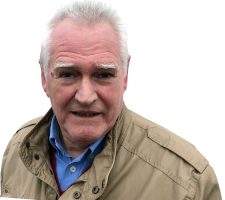search
date/time
 | Lancashire Times Weekend Edition |

Mike Tilling
Arts Correspondent
12:11 PM 2nd December 2023
arts
Review
Classical Music: Prokofiev Symphony No 5
Symphony No. 5 in B Flat Major, Op. 100,
Sergei Prokofiev
London Symphony Orchestra, conductor Gianandrea Noseda,
LSO0379-D / LSO Live
https://lsolive.lso.co.uk/
Sergei Prokofiev
London Symphony Orchestra, conductor Gianandrea Noseda,
LSO0379-D / LSO Live
https://lsolive.lso.co.uk/

It is not difficult to see where audiences have chosen to locate their listening preferences. Classical music lovers are on a continuum that moves backwards and forwards between these extremities. The ethereal, but tuneful, Bach at one end or the emotional, but challenging, Puccini at the other. I apologise to any reader who finds these caricatures distasteful, but I hope you see the point I am trying to make.
Prokofiev, like his contemporary Shostakovich, laboured under the 'socialist realist’ restrictions of Stalin’s Soviet Union of 1945. And yet, for all the limitations, they wrote music that has proven to be acceptable in the repertoires of orchestras worldwide.
Unlike Shostakovich, Prokofiev did not feel the heavy burden of the state on his neck for his Fifth Symphony. He used a standard four-movement structure: Andante; Allegro marcato; Adagio; Allegro giocoso—and felt little enticement towards the ‘absolute’.
Take, for example, the second movement, Allegro. Forming scenes in the mind’s eye is subjective, but the playfulness of the early part of the movement could be seen as depicting a child at play. Perhaps he or she is running in a field, stumbling, recovering, then falling again, but eventually easing down to a more leisurely game, or, if you prefer, the second movement is a scherzo in toccata mode with a theme in triple time. Which of those descriptions is more helpful in getting a feel for the music?
The third and fourth movements continue the moods of melancholy, followed by reflection, then triumph. There is something about Russian composers and dejection—they often seem to be writing with a hankie next to the manuscript. However, it is here in the last movement that the Prokofiev of Alexander Nevsky reasserts itself.
Principal guest conductor Gianandrea Noseda, and the players of the London Symphony Orchestra do full justice to Prokofiev’s range of emotions, from quiet reflection to spirited exuberance. Apart from the delightful First Symphony, I had never paid much attention to Prokofiev as a symphonist, preferring his music for film and the stage, but the Symphony Number Five (a piece that the composer regarded as one of his most successful) will make me think again.